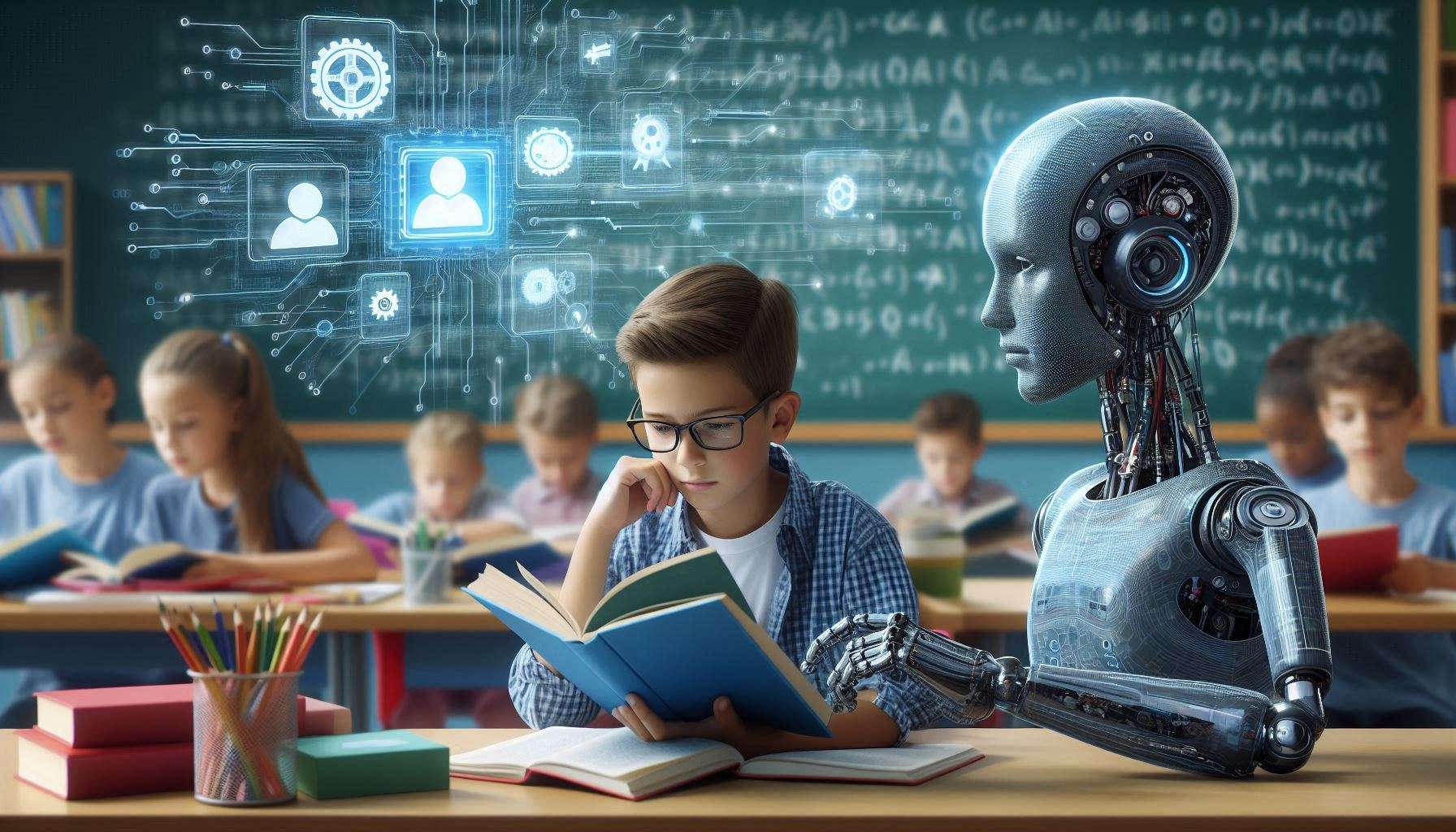AI in Education: How Machine Learning is Personalizing Learning and Improving Outcomes
AI-Powered Adaptive Learning Platforms: Personalized Education for Better Student Outcome
AI-Powered Adaptive Learning Platforms: Personalized Education for Better Student Outcome
What Are AI-Powered Adaptive Learning Platforms?
How AI Personalizes Education for Better Outcomes
- Individualized Learning Paths: Instead of a linear progression, these platforms create unique, dynamic paths for each student. If a student masters a concept quickly, the platform can advance them; if they struggle, it provides additional practice or alternative explanations. This is the essence of customized learning.
- Real-time Adaptive Assessment: Assessments are no longer summative but formative and continuous. The platform dynamically adjusts question difficulty based on answers, pinpointing specific areas of strength and weakness. This fuels precise interventions and improves the accuracy of adaptive assessment.
- Targeted Feedback and Remediation: Students receive immediate, constructive feedback tailored to their specific errors. This helps them understand why they made a mistake and provides resources for remediation, rather than just marking answers right or wrong.
- Predictive Analytics for Early Intervention: By analyzing learning analytics data, AI-driven learning systems can predict potential difficulties or disengagement before they become major problems. Educators can then intervene proactively, offering support before a student falls behind.
- Content Curation and Recommendation: Leveraging AI, platforms can recommend supplementary materials, videos, articles, or even different teaching methodologies based on a student’s demonstrated learning style or preferences.
-
Enhanced Engagement through Gamification: Many platforms incorporate gamified elements, such as points, badges, and leaderboards, keeping students motivated and making the learning process more enjoyable.
Transformative Benefits for Students, Educators, and Institutions
For Students:
- Improved Academic Achievement: Personalized instruction directly correlates with higher retention rates and better test scores.
- Increased Motivation and Confidence: Learning at an optimal pace reduces frustration, builds self-efficacy, and fosters a love for learning.
- Development of Self-Directed Learning Skills: Students learn to take ownership of their education, a vital skill for lifelong learning.
- Accessibility: Adaptive platforms can cater to diverse learning abilities, including students with special needs, making education more inclusive.
For Educators and Institutions:
- Data-Driven Instruction: Educators gain unparalleled insights into student progress, allowing them to tailor their classroom teaching and identify students needing extra help.
- Efficiency and Time-Saving: Automation of grading and basic tutoring frees up teachers to focus on complex problem-solving, critical thinking, and individual student mentorship.
- Scalability: Quality personalized education can be delivered to a larger number of students efficiently.
- Resource Optimization: Institutions can better allocate resources by understanding where students are struggling collectively.
Navigating Challenges and The Promising Future of AI Learning
- Data Privacy and Security: Robust measures are essential to protect sensitive student data.
- Development and Implementation Costs: Building and integrating these sophisticated systems requires significant investment.
- Teacher Training and Acceptance: Educators need comprehensive training and support to effectively leverage these tools as facilitators, not just consumers, of technology.
- Algorithmic Bias: Ensuring fairness and preventing algorithmic bias in educational content and assessments is paramount.
Despite these challenges, the future of AI in education is undeniably bright. As generative AI and Natural Language Processing (NLP) continue to evolve, we can expect even more human-like interactions, sophisticated content creation, and nuanced understanding of student emotions and cognitive states. These platforms will become indispensable tools for lifelong learning, corporate training (AI in L&D), and ensuring that education truly prepares individuals for a rapidly changing world. The promise of personalized education for better student outcomes is not just a vision, but an increasingly tangible reality.
Embracing the AI-Driven Personalized Learning Revolution
Intelligent Tutoring Systems: Ushering in a New Era of Personalized Learning
Discover how AI-powered personalized learning is transforming education.
What Are Intelligent Tutoring Systems (ITS)?
An Intelligent Tutoring System (ITS) is an AI-driven learning platform that provides customized instruction and feedback to learners. Unlike static educational software, ITS utilizes sophisticated machine learning algorithms and data analytics to understand a student’s cognitive state, identify knowledge gaps, and deliver tailored content and exercises. This adaptive approach ensures that every student receives the precise support they need, when they need it, fostering deeper understanding and improved retention.
Key terms: AI Tutoring, Adaptive Learning, Smart Learning, Customized Education.
Key Components of an Effective ITS
To deliver its personalized learning capabilities, an Intelligent Tutoring System typically comprises several interconnected modules:
- Domain Model: This module contains the expert knowledge of the subject matter, including concepts, rules, and problem-solving strategies. It’s the “what to teach” component.
- Student Model: The heart of personalized learning, this module tracks the student’s progress, understanding, misconceptions, and learning preferences. It continuously updates based on student interactions, providing insights into their strengths and weaknesses.
- Tutoring Model (Pedagogical Module): This component determines the optimal teaching strategies. It decides “how to teach” by leveraging data from the student model to select appropriate instructional methods, difficulty levels, and feedback mechanisms.
- User Interface: The interactive layer through which students engage with the system. It ensures a seamless and intuitive learning experience, often incorporating gamification and multimedia elements to boost student engagement.
- Authoring Module (Optional but common): Allows educators or subject matter experts to easily create, modify, and expand the content within the ITS.
The Transformative Benefits of Personalized Learning with ITS
Intelligent Tutoring Systems offer a myriad of advantages for both students and educators, fundamentally reshaping the learning journey:
- Truly Personalized Instruction: Moving beyond the “one-size-fits-all” model, ITS tailors content, pace, and difficulty, ensuring optimal challenge and support for every learner. This is the essence of **adaptive education technology.
- Immediate and Targeted Feedback: Students receive instant feedback on their responses, allowing for immediate correction of misconceptions and reinforcement of correct understanding. This vastly improves learning efficiency compared to traditional methods.
- Enhanced Student Engagement and Motivation: By providing interactive exercises, gamified elements, and relevant challenges, ITS keeps students actively involved and motivated to learn. This leads to higher **student engagement.
- Self-Paced Learning: Students can progress at their own speed, revisiting difficult concepts or accelerating through familiar ones, promoting a deeper grasp of the material.
- Data-Driven Insights (Learning Analytics): ITS collects valuable learning analytics on student performance, providing educators with actionable data to identify trends, pinpoint areas for improvement, and refine teaching strategies.
- Scalability and Accessibility: ITS can provide high-quality, personalized instruction to a vast number of students simultaneously, breaking down geographical and economic barriers to quality education.
- Reduced Teacher Workload: By automating assessment and providing personalized support, ITS frees up educators to focus on higher-level tasks, such as fostering critical thinking and addressing individual student needs more deeply.
Challenges and The Bright Future of Intelligent Tutoring Systems
While the promise of Intelligent Tutoring Systems is immense, their widespread adoption faces certain challenges:
- Development Complexity and Cost: Building sophisticated ITS requires significant investment in AI research, content development, and robust infrastructure.
- Data Privacy and Security: Handling vast amounts of student data necessitates stringent data privacy and security measures.
- Algorithmic Bias: Ensuring that algorithms are fair and do not perpetuate existing educational inequalities is a critical ethical consideration.
- Integration with Existing Systems: Seamless integration of ITS with current learning management systems (LMS) and educational frameworks can be complex.
- Teacher Training and Acceptance: Educators need proper training and support to effectively integrate ITS into their pedagogical practices.
Despite these hurdles, the future of Intelligent Tutoring Systems is incredibly promising. We are witnessing rapid advancements in generative AI, Natural Language Processing (NLP), and emotion-aware AI, which will make ITS even more intuitive, human-like, and effective. The integration of AI in learning and development is set to revolutionize corporate training, lifelong learning, and professional development, creating highly engaging and effective learning experiences across all sectors.
Embracing the AI Revolution in Learning
Intelligent Tutoring Systems are not just a technological advancement; they represent a fundamental shift towards a more equitable, efficient, and engaging educational paradigm. By leveraging the power of AI in education, we can unlock each student’s full potential, providing tailored support that was once only possible through dedicated one-on-one human tutoring. As this adaptive education technology continues to evolve, it promises to usher in a new era of personalized learning, truly preparing learners for the complexities of the 21st century. The journey towards a future where every student receives a truly customized and empowering learning experience is well underway, thanks to ITS.
AI-Driven Analytics: Unlocking Insights into Student Learning
Predictive Analytics for Student Success
One of the most impactful uses of AI in education is predictive analytics. These tools can forecast which students are at risk of falling behind, enabling teachers and administrators to intervene early with personalized support plans. Whether it’s through modifying lesson plans or offering tutoring, predictive AI models support proactive rather than reactive teaching strategies.
Enhancing Personalized Learning Experiences
AI-driven analytics enhances personalized learning by adapting educational content to fit individual learning preferences and pacing. These smart systems track performance in real time, recommend learning materials, and adjust difficulty levels to match the student’s progress. This results in higher student engagement, improved retention, and better academic performance across various subjects.
Empowering Educators with Actionable Insights
Educators benefit significantly from AI-powered analytics dashboards that highlight which students need additional help, what topics are causing confusion, and how well the class is progressing overall. These insights help teachers make informed decisions about curriculum design, classroom interventions, and instructional techniques—driving continuous improvement in teaching and learning.
Improving Institutional Efficiency and Outcomes
At the administrative level, AI-driven data analytics helps schools and universities optimize resource allocation, identify systemic issues, and measure the effectiveness of educational programs. By integrating learning analytics tools into their decision-making processes, institutions can enhance both educational quality and operational efficiency.
The Future of Learning with AI-Driven Analytics
As the demand for data-driven education continues to grow, AI in education will play a central role in shaping the future of learning. With ongoing advancements in machine learning and artificial intelligence technologies, educators and institutions will be better equipped to deliver impactful, personalized, and inclusive education to learners worldwide.
Embracing AI-driven learning analytics not only improves academic outcomes but also empowers a new generation of students and educators to thrive in a digitally connected world. By unlocking deep insights into student behavior and performance, AI is redefining the landscape of modern education.


hq5o1q
11ht4i